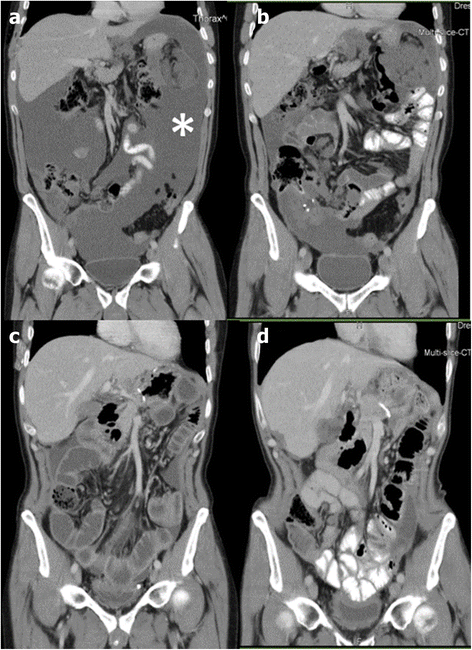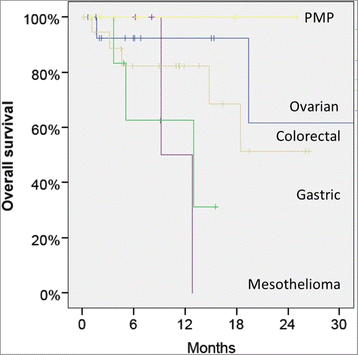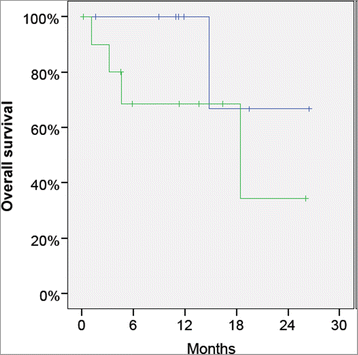Pressurized intraperitoneal aerosol chemotherapy (PIPAC) as a neoadjuvant therapy before cytoreductive surgery and hyperthermic intraperitoneal chemotherapy
- PMID: 27678344
- PMCID: PMC5039790
- DOI: 10.1186/s12957-016-1008-0
Pressurized intraperitoneal aerosol chemotherapy (PIPAC) as a neoadjuvant therapy before cytoreductive surgery and hyperthermic intraperitoneal chemotherapy
Abstract
Background: Pressurized intraperitoneal aerosol chemotherapy (PIPAC) is a novel drug delivery system able to induce regression of peritoneal metastasis (PM) in the salvage situation. The aim of this study was to determine the clinical characteristics, tumor histology, and extent of disease of the patients having undergone cytoreductive surgery (CRS) and hyperthermic intraperitoneal chemotherapy (HIPEC) after "neoadjuvant" PIPAC.
Methods: This study was performed at a single institution, tertiary center. In a prospective registry, retrospective analysis was done. PIPAC indication was restricted to patients in the salvage situation who were not eligible for cytoreductive surgery (CRS) and hyperthermic intraperitoneal chemotherapy (HIPEC).
Results: Nine-hundred sixty-one PIPAC sessions were successfully performed in 406 patients: 21 patients (5.2 %) were scheduled for CRS and HIPEC. Twelve of these patients had a low PCI (mean 5.8 ± 5.6). The remaining nine patients showed an advanced peritoneal disease (mean PCI 14.3 ± 5.3) at initial laparoscopy. After repeated PIPAC (mean number of cycles 3.5 ± 0.9), radiological tumor regression was observed in 7/9 patients and major histological regression was observed in 8/9 patients, so that secondary CRS and HIPEC became possible.
Conclusions: PIPAC might be used as a neoadjuvant therapy before CRS and HIPEC in order to improve the outcome of CRS and HIPEC, to select patients with chemosensitive, biologically favorable tumors, to extent the indications of CRS and HIPEC in the presence of diffuse small bowel involvement, and to reduce the extent of cytoreductive surgery.
Keywords: Cisplatin; Cytoreductive surgery; Doxorubicin; Hyperthermic intraperitoneal chemotherapy (HIPEC); Intraperitoneal chemotherapy; Peritoneal metastasis; Pressurized intraperitoneal aerosol chemotherapy (PIPAC).
Figures




References
-
- Sadeghi B, Arvieux C, Glehen O, Beaujard AC, Rivoire M, Baulieux J, Fontaumard E, Brachet A, Caillot JL, Faure JL, Porcheron J, Peix JL, François Y, Vignal J, Gilly FN. Peritoneal carcinomatosis from non-gynecologic malignancies: results of the EVOCAPE 1 multicentric prospective study. Cancer. 2000;88(2):358–363. doi: 10.1002/(SICI)1097-0142(20000115)88:2<358::AID-CNCR16>3.0.CO;2-O. - DOI - PubMed
-
- Ceelen W, Levine EA, editors. Intraperitoneal cancer therapy: principles and practice. Boca Raton: CRC Press; 2016.
LinkOut - more resources
Full Text Sources
Other Literature Sources
Medical
Miscellaneous

